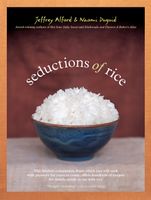Advertisement
Why are Different Rices Cooked in Different Ways?
Appears in
By Jeffrey Alford and Naomi Duguid
Published 1998
Long before getting deep into research for this book, we knew that different kinds of rice needed different cooking techniques. For example, we soak and steam Thai sticky rice; soak and absorption-cook Japanese rice; soak, then briefly boil and then steam basmati and other long-grain rices; briefly sauté, then stir Italian rice … and the list goes on and on. We never really understood, though, why different rices required different treatments. Now we have a better idea, at least.
Some of the differences in cooking technique are a matter of culture and taste. But many are dictated or strongly determined by the characteristics of the individual rice variety. With so many varieties out there, it’s hazardous to generalize, but we can roughly distinguish the cooking characteristics of different rices according to two measures: their degree of waxiness—or whether they are high-, medium-, or low-amylose rice—and the gelatinization temperature of the starches in the rice.

